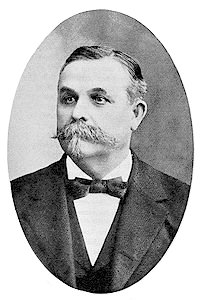Gospel music is a traditional genre of Christian music, and a cornerstone of Christian media. The creation, performance, significance, and even the definition of gospel music varies according to culture and social context. Gospel music is composed and performed for many purposes. Including aesthetic pleasure, religious or ceremonial purposes, and as an entertainment product for the marketplace. Gospel music is characterized by dominant vocals and strong use of harmony with Christian lyrics. Gospel music can be traced to the early 17th century.

Ira David Sankey was an American gospel singer and composer, known for his long association with Dwight L. Moody in a series of religious revival campaigns in America and Britain during the closing decades of the 19th century. Sankey was a pioneer in the introduction of a musical style that influenced church services and evangelical campaigns for generations, and the hymns that he wrote or popularized continued to be sung well into the 21st century.
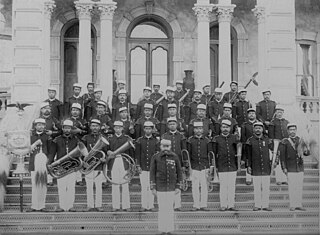
Henry or Henri Berger was a Prussian Kapellmeister, composer and royal bandmaster of the Kingdom of Hawaiʻi from 1872 to 1915.
"Hawaiʻi Aloha," also called "Kuʻu One Hanau," is a revered anthem of the native Hawaiian people and Hawaiʻi residents alike. Written by the Reverend Lorenzo Lyons, (1807-1886), also known as Makua Laiana, a Christian minister who died in 1886, to an old hymn, "I Left It All With Jesus," composed by James McGranahan (1840-1907), "Hawai‘i Aloha" was considered by the Hawaiʻi State Legislature in 1967 and by the Hawaiʻi State Constitutional Convention in 1978 to become the official state song, but "Hawaiʻi Pono‘ī," written by King David Kalākaua and composed by Royal Hawaiian Band Master Henri Berger, was chosen instead.
"How Can I Keep From Singing?" is an American folksong originating as a Christian hymn. The author of the lyrics was known only as 'Pauline T', and the original tune was composed by American Baptist minister Robert Lowry. The song is frequently, though erroneously, cited as a traditional Quaker or Shaker hymn. The original composition has now entered into the public domain, and appears in several hymnals and song collections, both in its original form and with a revised text that omits most of the explicitly Christian content and adds a verse about solidarity in the face of oppression. Though it was not originally a Quaker hymn, Quakers adopted it as their own in the twentieth century and use it widely today.

Lorenzo Lyons or "Makua Laiana" was an early missionary to the Kingdom of Hawaii. He was a songwriter who wrote the lyrics of "Hawaiʻi Aloha", which was inducted into the Hawaiian Music Hall of Fame in 1998. Lyons spent the last 28 years of his life as postmaster in the district surrounding Waimea, Hawaii County, Hawaii.

Philip Paul Bliss was an American composer, conductor, writer of hymns and a bass-baritone Gospel singer. He wrote many well-known hymns, including "Hold the Fort" (1870), "Almost Persuaded" (1871); "Hallelujah, What a Saviour!" (1875); "Let the Lower Lights Be Burning"; "Wonderful Words of Life" (1875); and the tune for Horatio Spafford's "It Is Well with My Soul" (1876). Bliss was a recognized friend of D. L. Moody, the famous Chicago preacher. Bliss died in the Ashtabula River Railroad Disaster on his way to one of Moody's meetings. An outspoken Abolitionist, he served as a Lieutenant during the American Civil War.
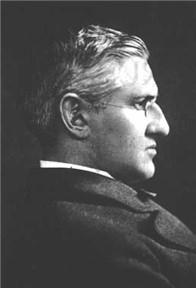
"It Is Well With My Soul", also known as "When Peace, Like A River", is a hymn penned by hymnist Horatio Spafford and composed by Philip Bliss. First published in Gospel Hymns No. 2 by Ira Sankey and Bliss (1876), it is possibly the most influential and enduring in the Bliss repertoire and is often taken as a choral model, appearing in hymnals of a wide variety of Christian fellowships.

Robert Lowry was an American preacher who became a popular writer of gospel music in the mid- to late-19th century. His best-known hymns include "Shall We Gather at the River", "Christ Arose!", "How Can I Keep from Singing?" and "Nothing But The Blood Of Jesus".
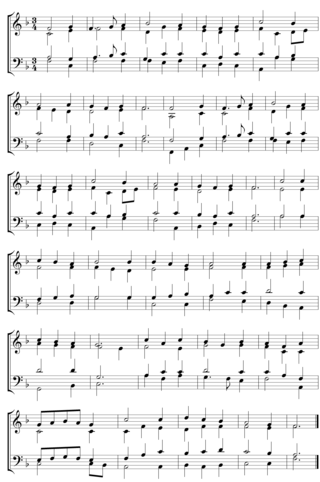
Hyfrydol is a Welsh hymn tune that appears in a number of Christian hymnals in various arrangements. Composed by Rowland Prichard, it was originally published in the composer's handbook to the children's songbook Cyfaill y Cantorion in 1844. Prichard composed the tune before he was twenty years old.

Sacred Songs and Solos is a hymn collection compiled by Ira David Sankey, who partnered Dwight Lyman Moody in a series of evangelical crusades from 1870 until Moody's death in 1898. The collection first appeared in 1873, and has subsequently been published in many editions and formats, expanding to a final volume of 1200 pieces that appeared around 1907. Although the publication was and is popularly known as Sankey and Moody's Songs, or The Sankey-Moody Hymnbook, many of the tunes and lyrics are by other authors, and the volume includes many standard church hymns. Around 200 of the tunes were written or arranged by Sankey.
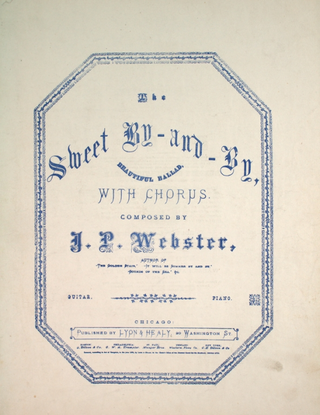
"The Sweet By-and-By" is a Christian hymn with lyrics by S. Fillmore Bennett and music by Joseph P. Webster. It is recognizable by its chorus:

Major Daniel Webster Whittle was a 19th-century American gospel song lyricist, evangelist, and Bible teacher.

George Coles Stebbins (1846–1945) was a gospel song writer. Stebbins was born February 26, 1846, in Orleans County, New York, where he spent the first 23 years of his life on a farm. In 1869 he moved to Chicago, Illinois, which marked the beginning of his musical career.
Under His Wings is a soulful gospel song composed by Stephen Manders, and inspired by the 19th century hymn of William Orcutt Cushing and music of Ira D. Sankey.

There shall be showers of blessings is a Christian hymn which was written in 1883 by Daniel Webster (1840–1901) under the pseudonym of D. W. Whittle. It was given music by James McGranahan.

Lydia Baxter was an American poet and hymnwriter. She is chiefly remembered as the author of "The Gate Ajar for Me" and other Sunday school hymns, which became widely known and very popular. This song in particular, and some events associated with it, influenced Ira D. Sankey, American gospel singer and composer, to write his first hymn.
